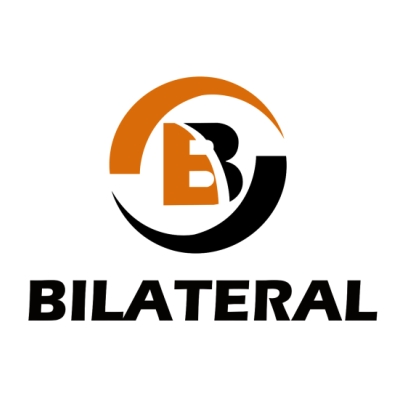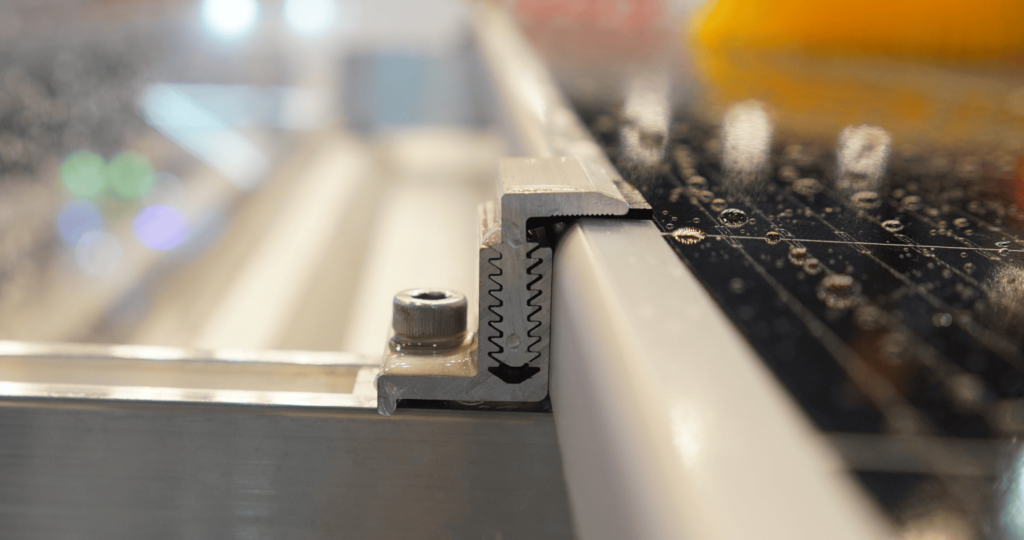1. What are the common installation methods for flat roofs?
Flat roofs usually use three methods: penetration, ballasted, and hybrid. Penetration uses bolts fixed to the structure, ballast relies on concrete blocks, and hybrid combines both for better stability.
2. What installation methods are used for sloped roofs?
Main options are tile roof hooks for clay tile roofs, cut-tile hooks for cement tile roofs, and hanger bolts or clamps for metal roofs.
3. What is an end clamp?
End clamps secure solar modules at the outer edges. They must match the module thickness.
4. What is a mid clamp?
Mid clamps are installed between two adjacent solar modules to secure and align them. Available in fixed and adjustable types.
5. What is the difference between mid clamps and end clamps?
Mid clamps go between modules, while end clamps fix modules at the edges. Both are essential for system stability.
6. What is a solar hanger bolt?
A solar hanger bolt (double-thread screw) is commonly used for metal and cement tile roofs. It anchors into the purlin below and connects to mounting rails.
7. What should be noted when installing solar hanger bolts?
The EPDM washer must sit on the smooth rod, not on the threads, to prevent water leakage. Sealant is recommended for extra waterproofing.
8. Should I use roof hooks or hanger bolts for metal roofs?
Hooks or clamps work for trapezoidal metal sheets. For strong purlins, hanger bolts provide a secure penetration option.
9. What should be considered for clay tile roof installation?
Tiles often need to be cut or adjusted to allow hooks to sit flush. Misalignment may cause module stress.
10. Does a ballasted flat roof system increase roof load?
Yes. Ballasted systems rely on weight, typically 30–50 kg per square meter, so roof load capacity must be checked.
11. How to ensure waterproofing in penetrated flat roof systems?
Use sealing washers, EPDM gaskets, and waterproof sealant. A water leakage test is recommended after installation.
12. When is a hybrid flat roof system suitable?
In high wind areas, combining ballast with penetrated anchors provides extra stability without overloading the roof.
13. Why use adjustable mid clamps?
They fit different module thicknesses, reducing inventory and improving on-site flexibility.
14. What materials are commonly used for mounting systems?
Aluminum alloy (lightweight, anti-corrosion) and stainless steel 304/316 (high strength, rust resistance).
15. What are the common rail profiles?
40 mm and 50 mm height rails are most common, selected according to span length and wind load.
16. What is the recommended torque for mid and end clamps?
Typically 8–12 Nm. Over-tightening may damage the frame, while under-tightening causes loosening.
17. What to note when installing hooks on cement tile roofs?
Tiles should be cut to avoid bending. Screws must be driven into the wooden purlin or structural beam.
18. Where are roof clamps applicable?
Special clamps suit trapezoidal or corrugated metal sheets. They don’t require drilling, protecting roof waterproofing.
19. Do hanger bolts require expansion bolts for metal roofs?
No. They are screwed directly into purlins, but pre-drilling is usually necessary.
20. What is the common tilt angle for flat roof systems?
10°–30°, depending on latitude and shading. Smaller angles reduce output, while larger ones increase wind load.
21. How to ensure durability of mounting systems?
Use anodized aluminum and stainless steel. Look for salt spray resistance (>1000 hours) and certifications like TÜV.
22. How to select mid and end clamp sizes?
Match the module thickness (e.g., 30 mm, 35 mm, 40 mm). Always confirm frame dimensions before installation.
23. What makes solar hanger bolts different from normal bolts?
They feature dual threads (wood screw + machine thread) for strong anchoring in purlins and easy rail connection.
24. What happens if the EPDM washer is installed incorrectly?
Improper placement leads to water leakage, roof damage, and possible system failure over time.
25. Why do some flat roof systems need wind deflectors?
Deflectors reduce uplift wind pressure, improving safety and reducing ballast requirements.
26. How to prevent clamps from loosening?
Check torque after installation and use lock nuts or spring washers.
27. What quality standards are applied to solar mounting systems?
Common standards: ISO 9001, TÜV certification, salt spray test (>1000 hours), and mechanical load testing.
28. How to reduce mounting system costs?
Use adjustable clamps, standardized hooks, and lightweight aluminum profiles to save on logistics and labor




